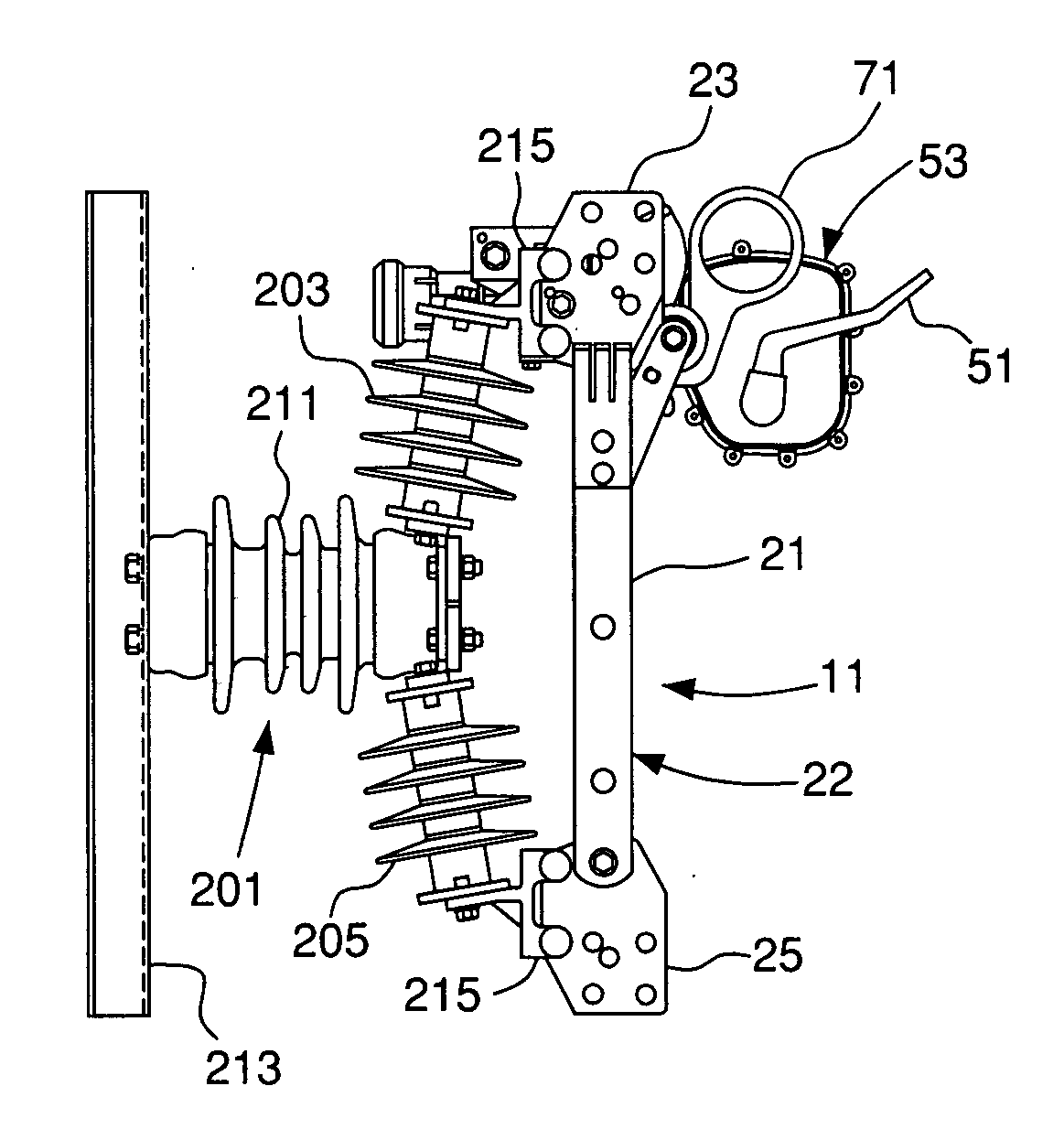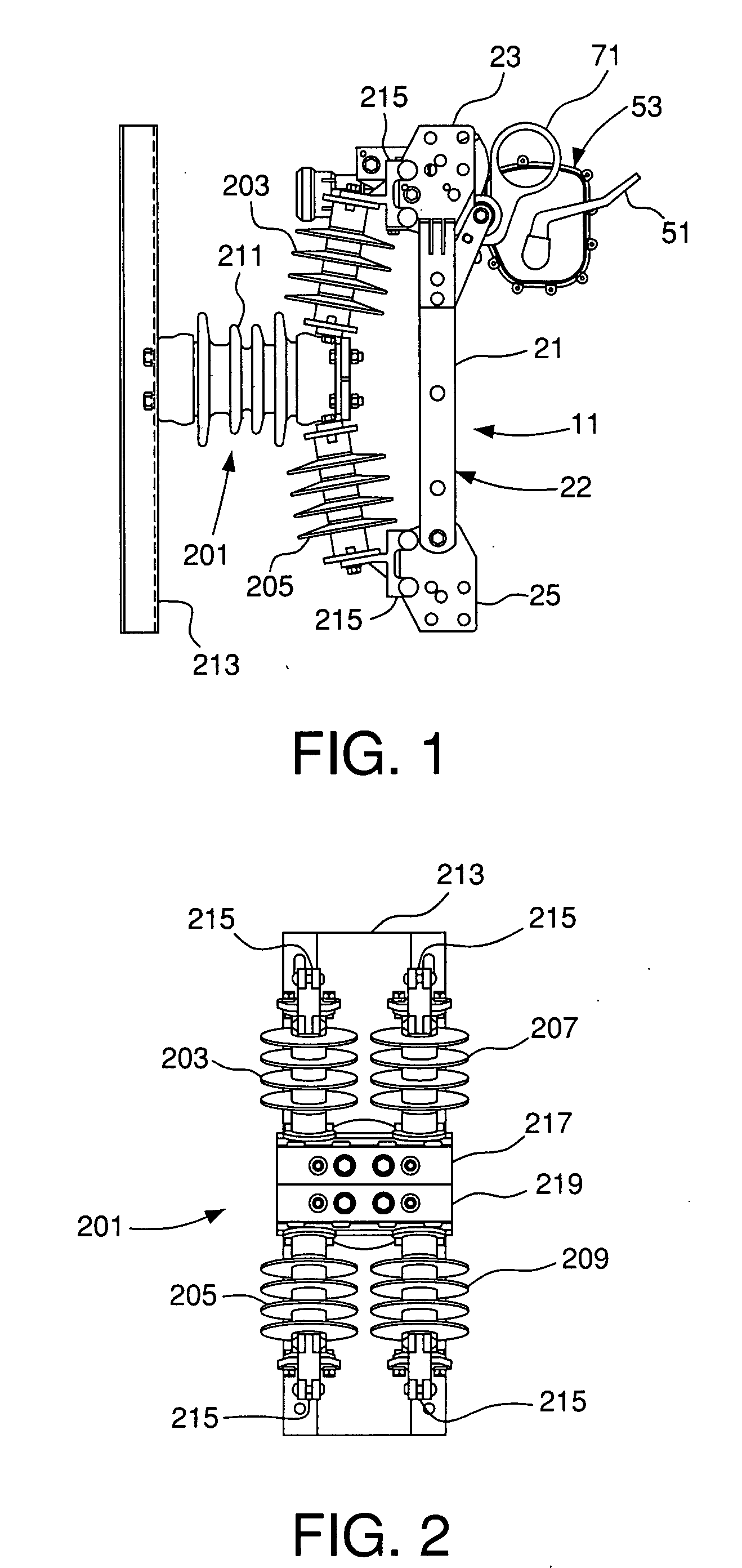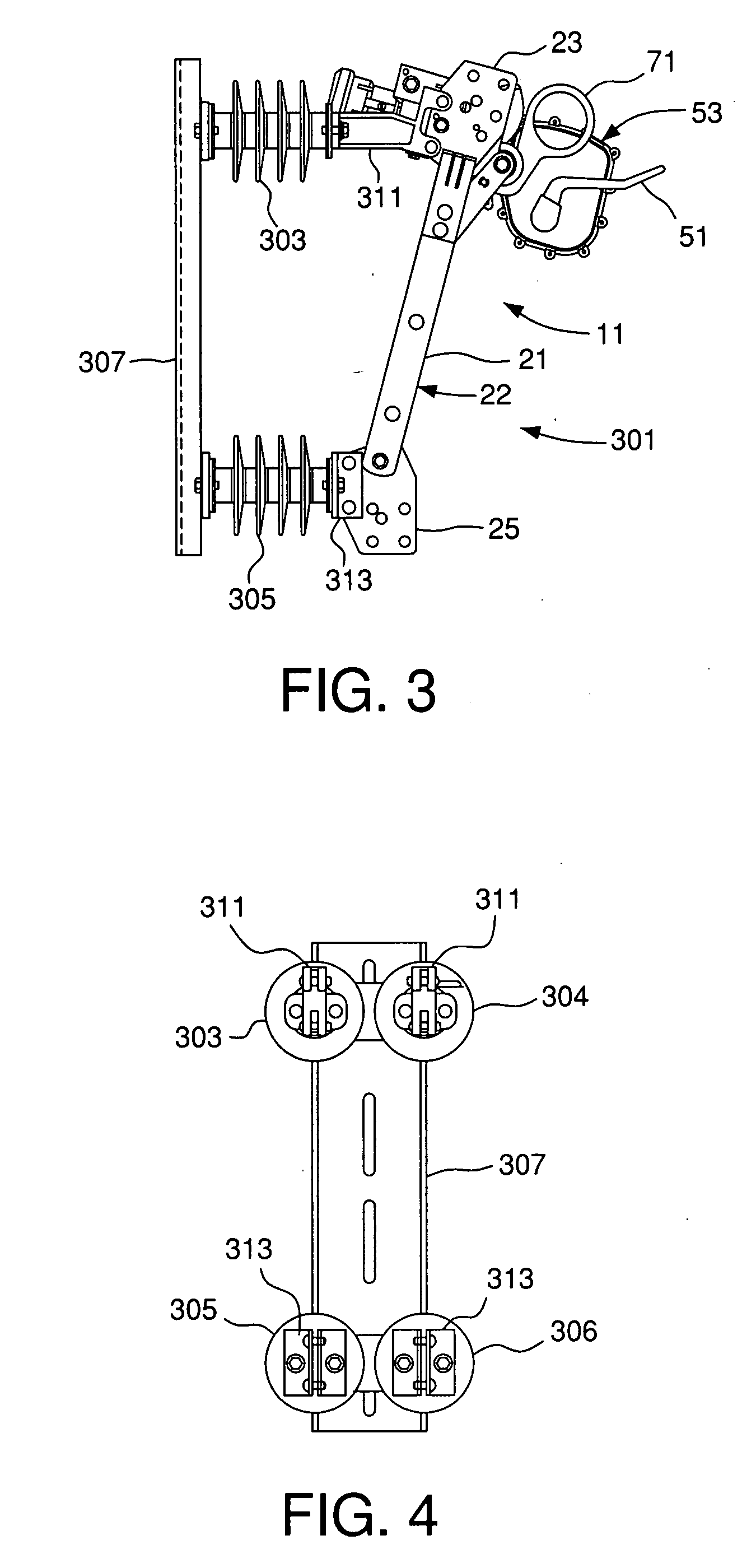Regulator bypass switch assembly
a technology of bypass switch and regulator, which is applied in the direction of hot stick switch, contact mechanism, contact, etc., can solve the problems of increasing the amount of time needed to isolate or connect the regulator, and the operator providing maintenance to the regulator, if the regulator is not isolated from the system, the risk of not being able to provide the operator with the regulator's maintenance is high
- Summary
- Abstract
- Description
- Claims
- Application Information
AI Technical Summary
Benefits of technology
Problems solved by technology
Method used
Image
Examples
Embodiment Construction
[0042] As shown in FIGS. 1 and 3, the present invention relates to station and distribution class regulator bypass switch assemblies, respectively. As shown in FIGS. 2 and 4, the present invention relates to the base, insulators and current carrying parts mounting adapters relative to station and distribution class switch assemblies, respectively. FIGS. 1 and 2 show a station class bypass switch assembly 201. FIGS. 3 and 4 show a distribution class bypass switch assembly 301. FIGS. 5-39 relate to both the station and distribution class bypass switch assemblies.
[0043]FIGS. 1-2 show a regulator bypass switch assembly 11 according to an exemplary embodiment of the present invention being used with a station class system 201. FIGS. 3-4 show the regulator bypass switch assembly 11 being used with a distribution class system 301 according to another exemplary embodiment of the present invention. The regulator bypass switch assemblies 11 used with the distribution and substation systems a...
PUM
| Property | Measurement | Unit |
|---|---|---|
| breaking | aaaaa | aaaaa |
| residual | aaaaa | aaaaa |
| electrical | aaaaa | aaaaa |
Abstract
Description
Claims
Application Information
 Login to View More
Login to View More - R&D
- Intellectual Property
- Life Sciences
- Materials
- Tech Scout
- Unparalleled Data Quality
- Higher Quality Content
- 60% Fewer Hallucinations
Browse by: Latest US Patents, China's latest patents, Technical Efficacy Thesaurus, Application Domain, Technology Topic, Popular Technical Reports.
© 2025 PatSnap. All rights reserved.Legal|Privacy policy|Modern Slavery Act Transparency Statement|Sitemap|About US| Contact US: help@patsnap.com



